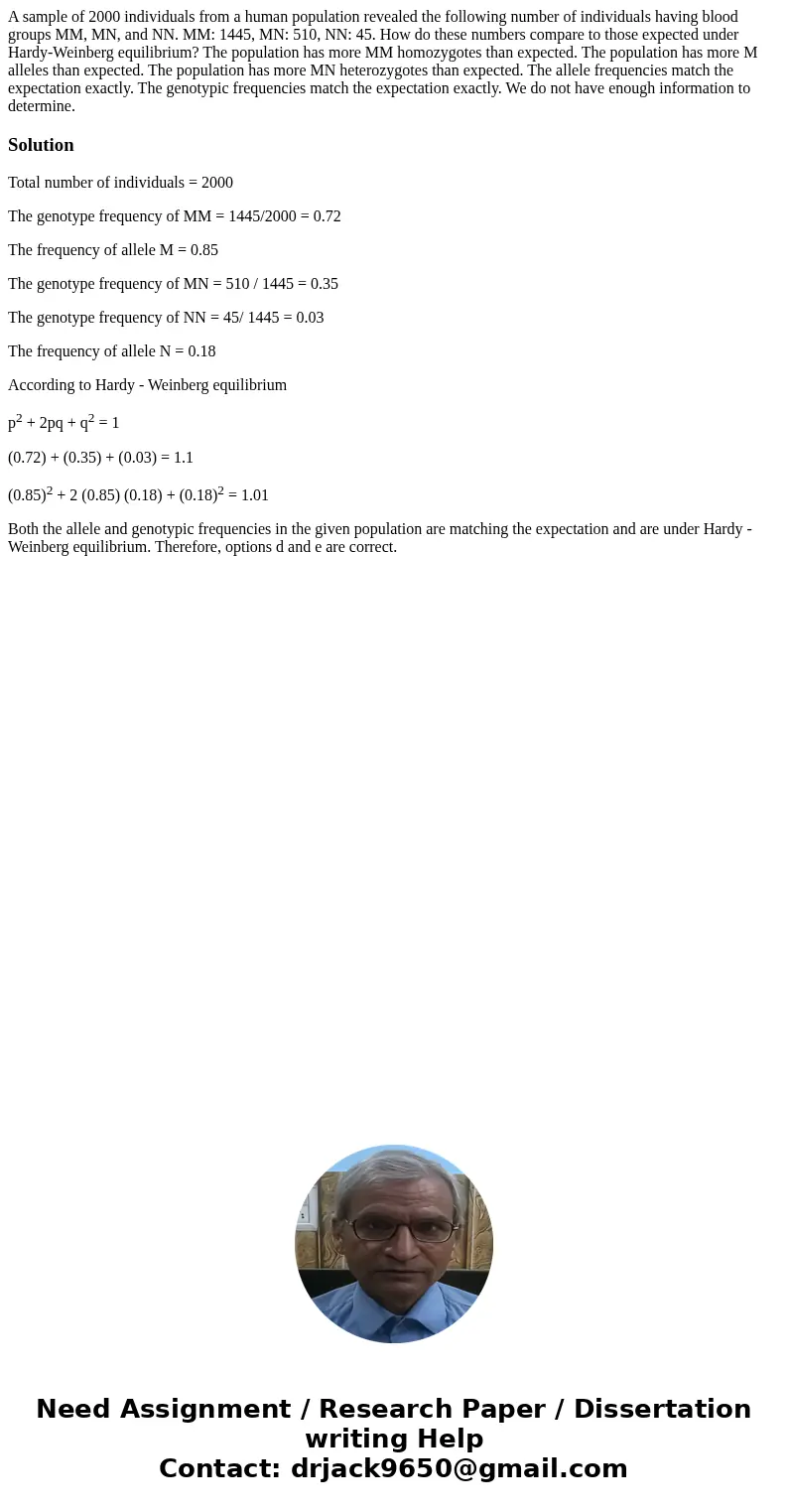A sample of 2000 individuals from a human population reveale
A sample of 2000 individuals from a human population revealed the following number of individuals having blood groups MM, MN, and NN. MM: 1445, MN: 510, NN: 45. How do these numbers compare to those expected under Hardy-Weinberg equilibrium? The population has more MM homozygotes than expected. The population has more M alleles than expected. The population has more MN heterozygotes than expected. The allele frequencies match the expectation exactly. The genotypic frequencies match the expectation exactly. We do not have enough information to determine.
Solution
Total number of individuals = 2000
The genotype frequency of MM = 1445/2000 = 0.72
The frequency of allele M = 0.85
The genotype frequency of MN = 510 / 1445 = 0.35
The genotype frequency of NN = 45/ 1445 = 0.03
The frequency of allele N = 0.18
According to Hardy - Weinberg equilibrium
p2 + 2pq + q2 = 1
(0.72) + (0.35) + (0.03) = 1.1
(0.85)2 + 2 (0.85) (0.18) + (0.18)2 = 1.01
Both the allele and genotypic frequencies in the given population are matching the expectation and are under Hardy - Weinberg equilibrium. Therefore, options d and e are correct.

 Homework Sourse
Homework Sourse